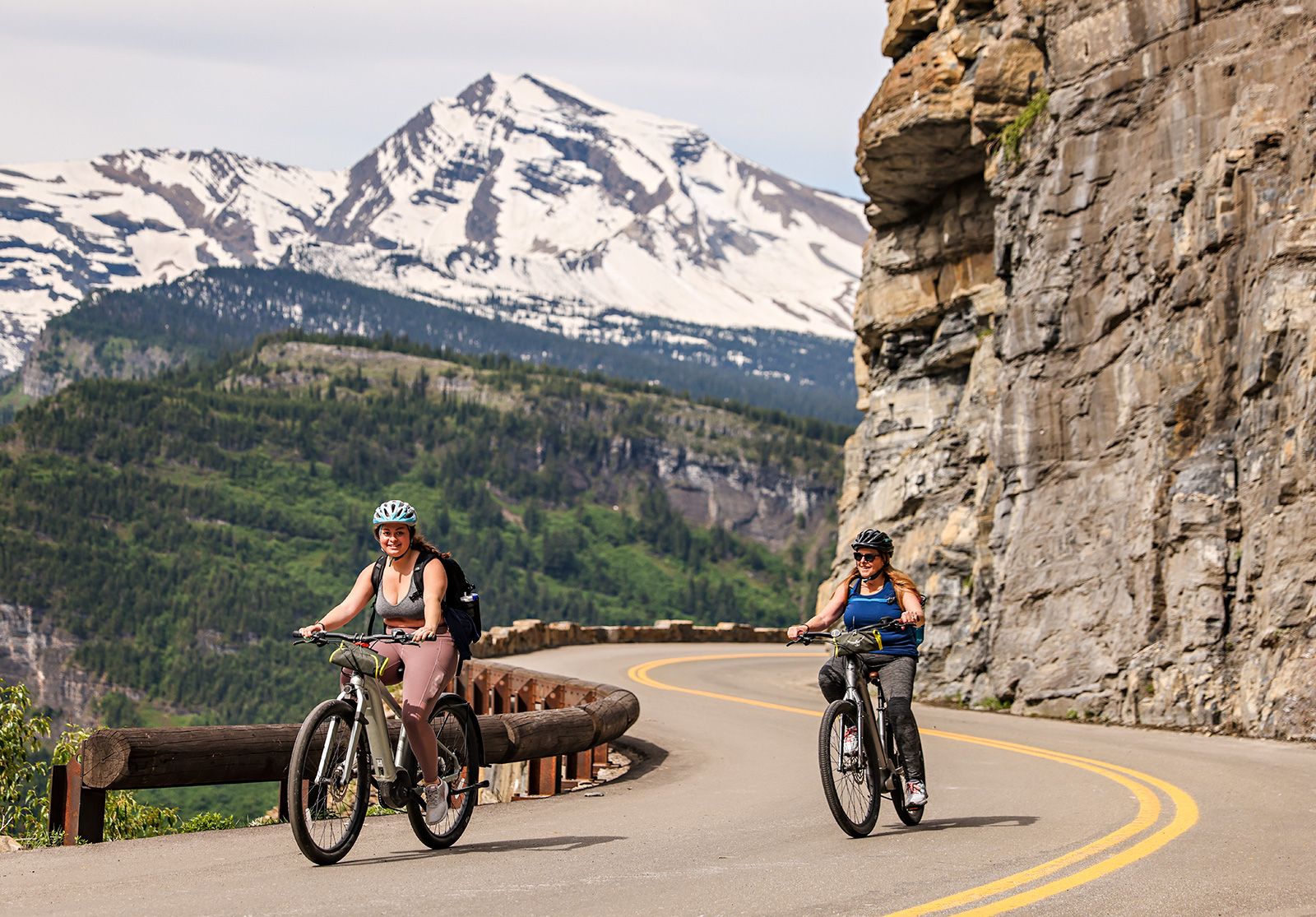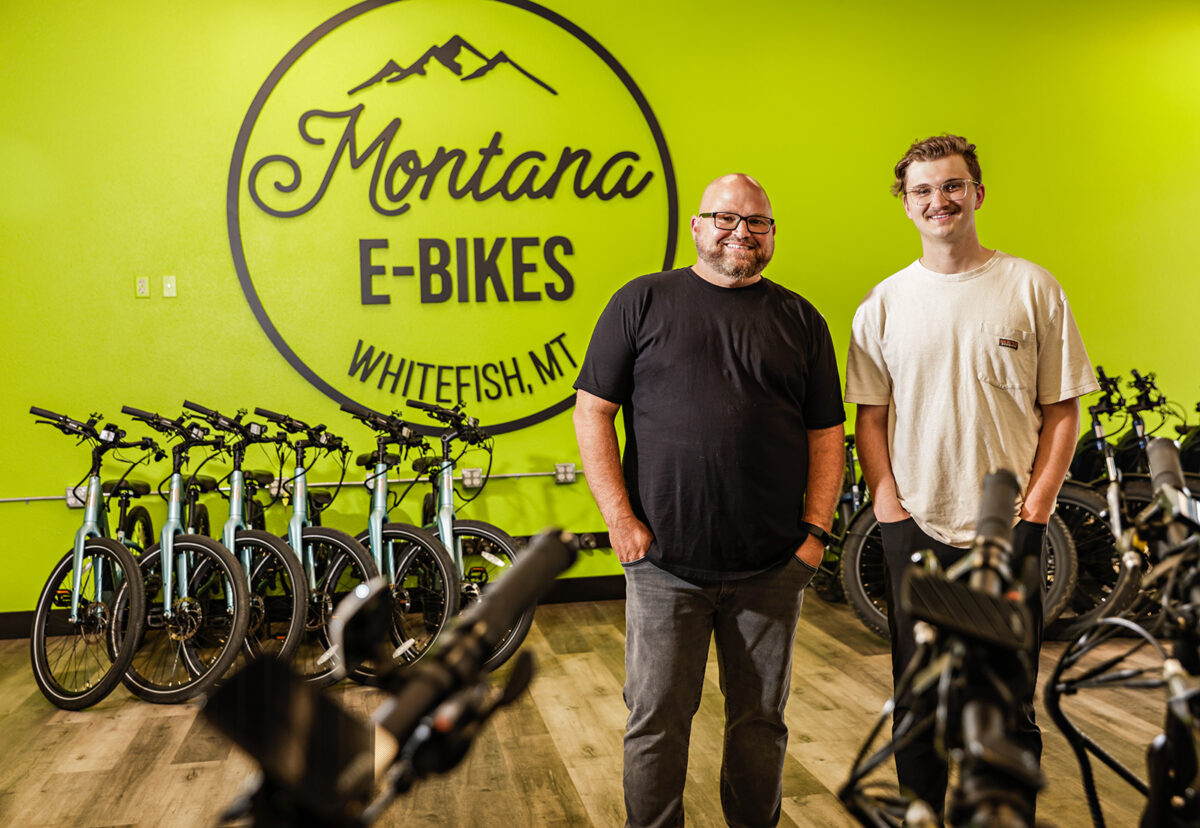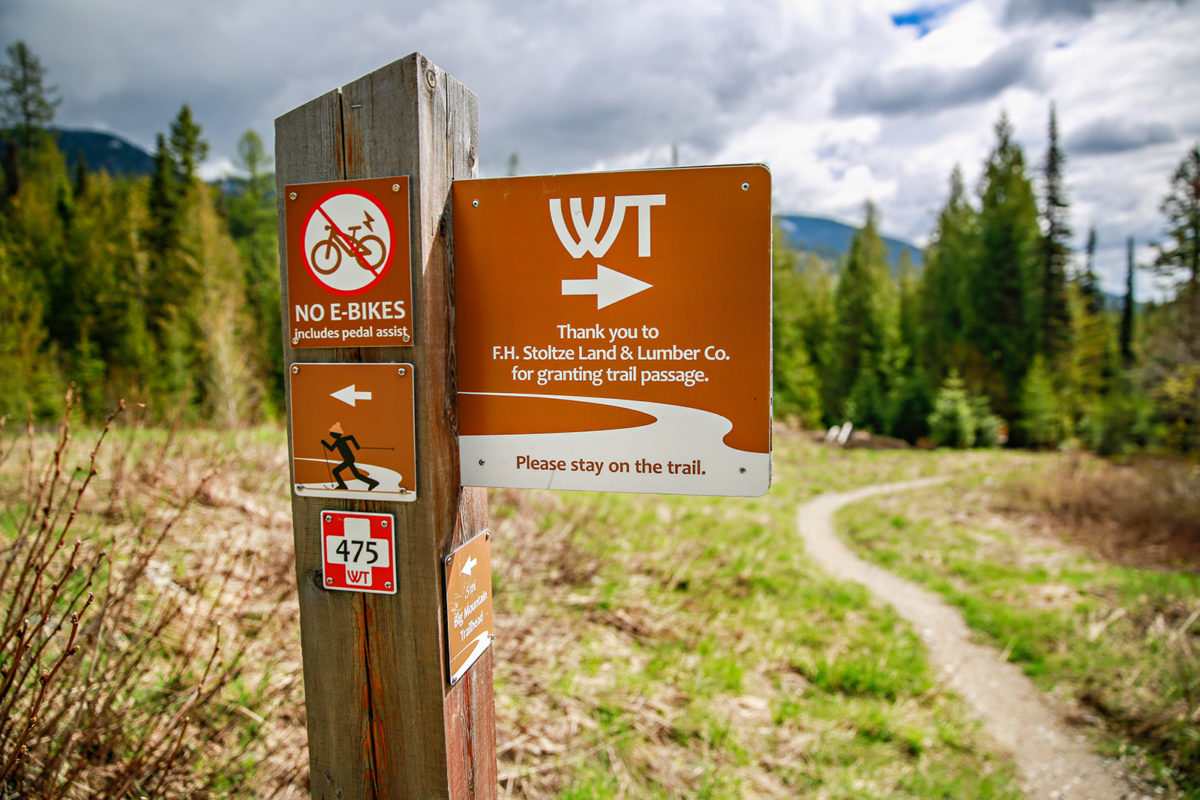Partners Work to Guide E-Bike Accessibility
As e-bikes rise in popularity, trail managers, business owners and government agencies are providing outreach and education as they continue to see use in non-motorized areas
By Maggie Dresser
Before Josh Houser and his wife bought each other electric bikes (e-bikes) for Christmas four years ago, he couldn’t remember the last time he had ridden a bicycle. They quickly grew passionate about their new hobby – riding them as their primary mode of transportation through the city of Whitefish and loading the battery-powered bikes on the back of their cars everywhere they went.
This spring, Josh and his son, Matthew, launched Montana E-Bikes in the Whitefish Mountain Center, just south of downtown, where they have a fleet of 30 Aventon e-bikes available for rent along with additional bikes for sale.
Josh said e-bikes changed his life and prompted him to adopt a more active lifestyle. Now, he helps others get into the outdoors.
“This is helping people get active again,” Josh said. “It gets people outside and allows them to check things off their bucket list. Their dreams are coming true.”
Josh and Matthew steadily rent out most of their e-bikes every day, although they said business has slowed down a bit since the Going-to-the-Sun Road in Glacier National Park opened to vehicles on June 13. Although the Sun Road’s springtime vehicle closure has long made the alpine highway a popular recreation corridor for cyclists willing to grind up its steep grade, the growing prevalence of e-bikes has transformed it into a regional destination enjoyed by people with a wide range of abilities.
At Montana E-bikes, the shop carries a variety of Class 2 e-bike styles, including mountain e-bikes, cruisers, and foldable e-bikes that don’t require a bike rack. The batteries allow an individual rider to travel for about 60 miles. They have a maximum speed of 20 miles per hour and take about four to six hours to charge if they are completely dead.

But as e-bike popularity rises, controversy surrounding trail access has too.
As a motorized mode of transportation, e-bikes are prohibited on trails like the Whitefish Trail, which is non-motorized use only. But Jedd Sankar-Gorton, the program director at Whitefish Legacy Partners, says they are regularly seen on the trails.
“We are noticing this year, in line with trends from the last couple years, that e-bike use around town and on the Whitefish Trail is increasing,” Sankar-Gorton said.
While the reports are anecdotal, Sankar-Gorton said the use is almost impossible to enforce and it’s creating complexities for state and federal agencies and private landowners.
Most of the Whitefish Trail is state land, which limits it to non-motorized use, according to state law. Additionally, there is a patchwork of 15 private land easements within the trail system along with a chunk of National Forest land.
To allow e-bike access on systems like the Whitefish Trail, e-bikes would need to be re-classified – an effort introduced unsuccessfully in the 2023 Legislative Session.
Two bills introduced by legislators were designed to revise and clarify the state’s definition of a bicycle to include e-bikes, which would allow e-bike access anywhere that bicycles are permitted.
If passed, House Bill 261 would have incorporated electric bicycles into traffic codes and would give local management jurisdictions the authority to prohibit certain classifications of e-bikes on natural-surface trails. The legislation failed on the House floor in its third reading.
The bill was meant to allow more e-bike access, but opponents argued that it would preempt local management authority while burdening trail administrators.
Additionally, Senate Bill 342 would have redefined e-bikes as non-motorized bicycles but would not have allowed local jurisdictions to prohibit certain classifications of e-bikes. The legislation failed in its third reading.
With a few exceptions, trail and bicycle advocates largely opposed both bills, saying the re-classification of e-bikes would create confusion on trails that thread a checkerboard of land management jurisdictions while drawing funding from public-and-private sources, some of which stipulates that non-motorized restrictions must extend to include e-bikes.
“Most of the easements have clauses that if the user does not upkeep the rules, the money goes back,” Sankar-Gorton said. “Even if state law changes to re-classify e-bikes, that doesn’t mean the federal law changes and that doesn’t mean our easements change. The management implications for us are severe. On most sections of the Whitefish Trail, you pass through seven landowners on the way.”
While Sankar-Gorton doesn’t agree with the legislation that was introduced in the recent session, he says state law will likely change in 2025, which has triggered conversations among agencies and e-bike business owners in the valley.
“The way that e-bikes are classified in the state will probably change 24 months from now and the more we can understand, the more we can be part of shaping that,” Sankar-Gorton said. “We are working with community partners and laying the groundwork.”
Earlier this month, Whitefish Legacy Partners, the city of Whitefish, e-bike rental companies and other partners met to brainstorm ways to promote safety and education surrounding e-bikes.
Sankar-Gorton is focusing on improving outreach and education as it relates to bike etiquette and management to reduce user conflicts.
Partners are also working to educate e-bike users about where they can and cannot go, and leaders are working to design an e-bike specific map in the coming years.

Josh and Matthew Houser, with Montana E-Bikes, also attended that meeting, and said it was a productive discussion that highlighted educating e-bike users.
“A big portion of the meeting was where to send people with e-bikes and how do we educate people in town,” Matthew said.
At their rental shop in Whitefish, Josh and Matthew make sure to inform their customers where to ride and they explain the traffic rules, steering people away from the Whitefish Trail and directing users toward e-bike friendly areas like Camas Road, East Lakeshore Drive and the Gateway to Glacier trail.
Josh advocates for more e-bike access, but he doesn’t believe that blanket solutions like the bills that were introduced this past session are the answer. He hopes some type of permit system can be integrated that will allow Class 2 e-bikes on some non-motorized trails that will allow greater accessibility.
“From an access standpoint, we’re helping so many people get on bikes that haven’t been on a bike in 10 or 20 years,” Josh said. “They’re finding a whole new life.”